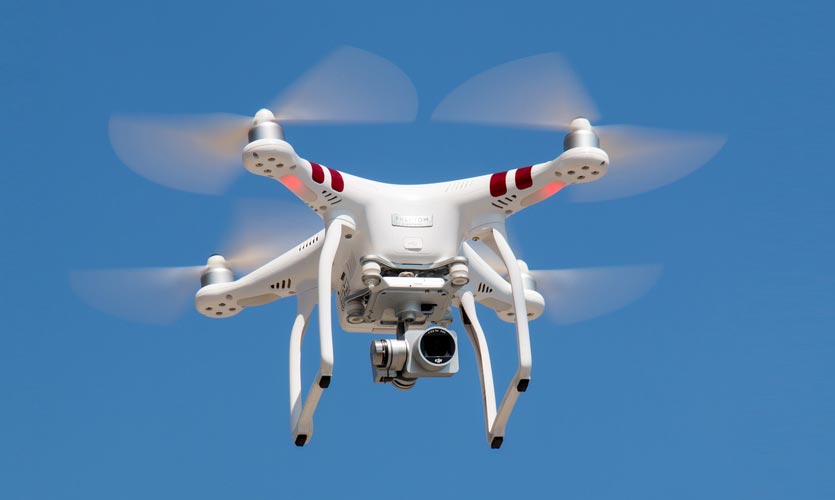The Ministry of Civil Aviation notified the liberalised ‘Drone Rules 2021’ this week that bring much relaxation in the unarmed aircraft system (UAS) guidelines, commonly known as drones. The new rules will replace the UAS Rules 2021 released earlier in March. A draft released by the ministry mentions the easing of several regulations to make drone operations simpler for civilian drone operators. The registration process and issuance of licenses has also been simplified, with no more security clearance required, as per the fresh rules. The weight permitted for the unarmed drones has also been increased from 300 kgs to 500 kgs.
While the liberalised policy shift for civilian drone comes on a positive note, the policy framework to ensure security from rogue drones through the 2019 anti-rogue drone framework remains the same. Noteworthy, the announcement of the new draft of drone rules comes weeks after a drone attack at the Indian Air Force base in Jammu.
Prime Minister Narendra Modi said that Drone Rules 2021 aim at boosting innovation technology and engineering. He tweeted, “The new Drone Rules usher in a landmark moment for this sector in India. The rules are based on the premise of trust and self-certification. Approvals, compliance requirements and entry barriers have been significantly reduced.” Modi further stated that the new rules “will tremendously help start-ups and our youth working in this sector. It will open up new possibilities for innovation & business. It will help leverage India’s strengths in innovation, technology & engineering to make India a drone hub”.
Post the release of the draft framework, the Minister of Civil Aviation, Jyotiraditya Scindia said that the new rules “aim at simplifying procedures and reducing compliance burden for drone operation”. “We are all set to usher in a new era of drone usage in India. The new Drone Rules will trigger a revolution not just in the logistics & transportation sector, but will create change ripples across sectors like agriculture, healthcare, mining etc. It will also provide a launchpad to our startups who are ready to lead this revolution from the front. Onwards & upwards from here on,” shared Scindia on Twitter.
Major Changes In Drone Rules
One of the major upsides of the new rules is that the paperwork has now been simplified, and instead of filling 25 forms like earlier, the number has been reduced to five. The types of fees charged to the operator has also been reduced from 72 to four. Several approvals that were mandated according to the previous policy framework have also been abolished, including having a unique authorisation number, a unique prototype identification number, a certificate of manufacturing and airworthiness, a certificate of conformance, a certificate of maintenance, import clearance, acceptance of existing drones, operator permit, authorisation of R&D organisation, a student remote pilot license, a remote pilot instructor authorisation, drone port authorisation, and so on.
Furthermore, the amount of fees for licensing has also been reduced and does not depend on the size of the drone. The license fee for larger drones has been reduced from ₹3000 to ₹100 – which is the fee for all categories of drone.
The aviation ministry had earlier formed the Digital Sky Platform through which, with the help of technology like ‘No Permission, No Takeoff’ (NPNT), unarmed aircraft operations could be digitally managed. Following the implementation of the new drone rules, the ministry issued that the platform will now be developed as a single window for required clearances. The platform will also feature an interactive airspace map to display the green, yellow and red zones and help the drone operators identify areas that are safe to fly their aircraft systems. The zones have been redefined, with the area 12 kms from the airport perimeter now in the yellow zone unlike the earlier radius of 45 kms. Operators can fly more closely to the airport now, without any permission.
Read more: What Is The National Infrastructure Monetisation Pipeline?
Additionally, among other key relaxations, the security clearance needed prior to the issuance of a registration or license is no longer required. The transfer and de-registration process has also been simplified. No unique identification number will be required to export the drone outside the country; it is only mandatory for operating within the country. The compulsion of a pilot license for non-commercial micro and nano drones has also been removed, and the penalty for violation has been reduced to ₹1 lakh. Foreign ownership has also been allowed for companies operating drones, and the Directorate General of Foreign Trade will be the regulator for the import of drones. The ministry stated that an Unmanned Aircraft Systems Promotion Council will be set up soon to enable a business-friendly regulatory regime.
The aviation ministry, in a press release on August 26, mentioned, “Drones can be significant creators of employment and economic growth due to their reach, versatility, and ease of use, especially in India’s remote and inaccessible areas.”










